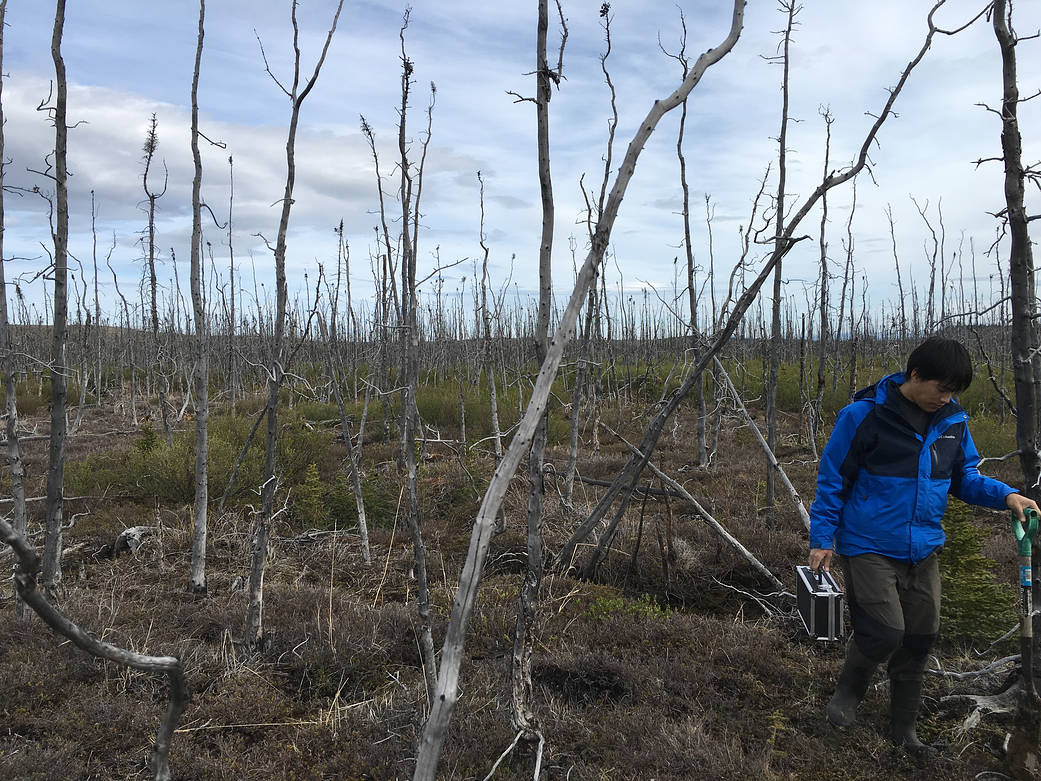Standing among dead black spruce trees in a burned area near Delta Junction, Richard Chen, a graduate student at University of Southern California, dug soil sampling pits throughout the burned area to sample for organic carbon content of the soil, measure the depth-to-permafrost, and to make electronic measurements of soil moisture for NASA’s Arctic-Boreal Vulnerability Experiment (ABoVE) campaign.
Wildfires in the Arctic often burn far away from populated areas, but their impacts are felt around the globe. From field and laboratory work to airborne campaigns and satellites, NASA is studying why boreal forests and tundra fires have become more frequent and powerful and what that means for climate forecasting, ecosystems and human health.
Credits: NASA/Peter Griffith
在阿拉斯加三角洲交界处附近被烧毁的地区,矗立着死去的黑色云杉。右边的是南加州大学的研究生理查德•陈(Richard Chen),他正在整个燃烧区域内挖掘土壤取样坑,以采集土壤的有机碳含量样本,测量冻土层的深度,并为NASA的 ABoVE 项目进行土壤湿度的电子测量。
北极地区的野火燃烧通常发生在远离人烟的地方,但在世界各地都能感受到其影响。通过实地调研、实验室研究以及机载项目和卫星观测,美国国家航空航天局(NASA)正在研究为什么北方森林和冻原火灾变得更加频繁和剧烈,以及这对气候预测、生态系统和人类健康而言意味着什么。
影像来源:NASA/Peter Griffith



